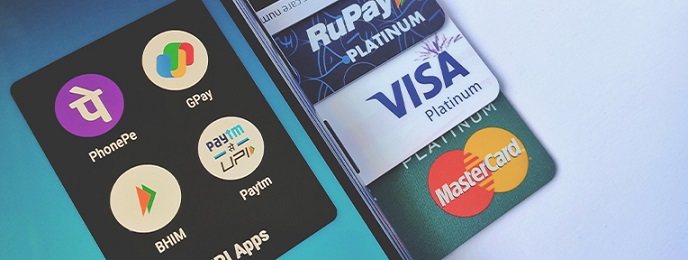
Can I Pay My Credit Card Bill via UPI?
Posted on Friday, June 28th, 2024 | By IndusInd Bank
This is the age of digital payments. Unified Payments Interface (UPI) has revolutionized the way we handle money transactions, providing a seamless and instant way to pay bills, transfer funds, and much more. But one of the questions frequently asked by credit card users is: “Can I pay my credit card bill via UPI?” The answer is a resounding yes.
In this blog, we will explore how to pay your credit card bill via UPI, the benefits of doing so, and why IndusInd Bank Credit Cards are considered among the best in the market.
Paying Your Credit Card Bill via UPI: A Step-by-Step Guide
Paying your credit card bill via UPI is quite straightforward. Here’s what you need to know:
- Choose Your UPI App: Open your preferred UPI-enabled app such as Google Pay, PhonePe, Paytm or your bank’s UPI app.
- Select Bill Payment Option: Navigate to the ‘Bill Payments’ section. This option might be listed under different names like ‘Credit Card Payment’, ‘Bill Pay’, etc.
- Enter Credit Card Details: Input your credit card number and the billing amount. Ensure the details are correct to avoid any issues.
- Verify Details: Double-check the details entered, including the card number and the amount to be paid.
- Complete the Payment: Confirm the payment using your UPI PIN. The amount will be debited from your bank account and credited to your credit card account.
Benefits of Paying Your Credit Card Bill via UPI
- Convenience: Pay your credit card bill anytime, anywhere, without the need to visit a bank or use a specific banking portal.
- Instant Transactions: UPI payments are processed instantly, ensuring timely bill payments and avoiding late fees.
- Security: UPI transactions are secure, with multiple layers of authentication to protect your financial information.
- Tracking: Easily track your payment history through your UPI app, ensuring transparency and easy record-keeping.
- Low Cost: UPI transactions as of now are free of charge, making it a cost-effective way to manage your payments.
How to Add IndusInd Bank Credit Card As A UPI Biller?
To keep paying your IndusInd Bank Credit Card bill via UPI in a recurring manner, follow these steps:
- Add IndusInd Bank as a Biller: In your UPI app, go to the ‘Add Biller’ section and select ‘Credit Card’. Choose IndusInd Bank from the list of available billers.
- Enter Card Details: Input your IndusInd Bank Credit Card number and validate the details.
- Set Up AutoPay: If your UPI app supports it, you can set up AutoPay to ensure your credit card bill is paid automatically every month, avoiding missed payments.
- Make a Payment: Each billing cycle, you can initiate a payment by selecting your IndusInd Bank Credit Card biller and entering the amount due.
Conclusion
Paying your credit card bill via UPI is not only possible but also highly beneficial. It offers convenience, speed, and security, ensuring that you can manage your finances effortlessly. IndusInd Bank Credit Cards further enhance this experience with their flexible payment options, rich rewards program, and excellent customer service. Whether you are looking to simplify your bill payments or enjoy the numerous benefits of a top-tier credit card, IndusInd Bank Credit Cards are an excellent choice. Embrace the convenience of UPI payments and enjoy the best-in-class service with IndusInd Bank Credit Cards today.
Disclaimer: The information provided in this article is generic in nature and for informational purposes only. It is not a substitute for specific advice in your own circumstances. Hence, you are advised to consult your financial advisor before making any financial decision. IndusInd Bank Limited (IBL) does not influence the views of the author in any way. IBL and the author shall not be responsible for any direct/indirect loss or liability incurred by the reader for taking any financial decisions based on the contents and information.



 Offers
Offers Rates
Rates Debit Card Related
Debit Card Related Credit Card Related
Credit Card Related Manage Mandate(s)
Manage Mandate(s) Get Mini Statement
Get Mini Statement
 categories
categories Bloggers
Bloggers Blog collection
Blog collection Press Release
Press Release


